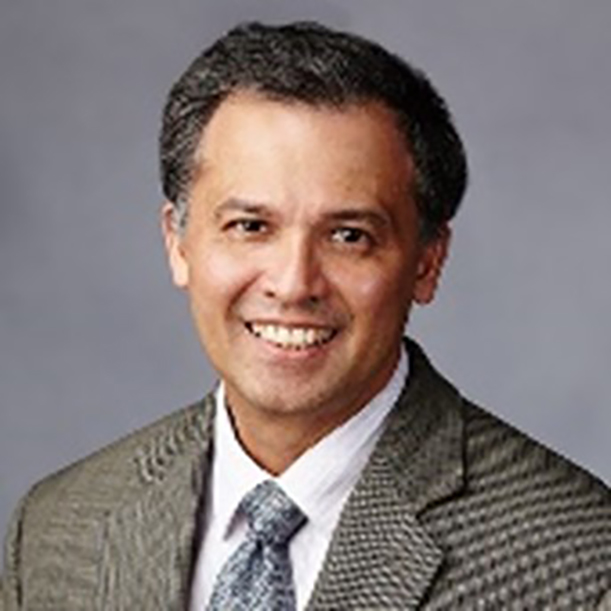
Prof. Eakalak Khan
University of Nevada, USA
Dodecyl-β-D-Maltoside Blocks Bacterial Appendage Attachment to Wastewater Treatment Membranes
University of Nevada, USA
Dodecyl-β-D-Maltoside Blocks Bacterial Appendage Attachment to Wastewater Treatment Membranes
Membrane bioreactors (MBRs) are becoming more common in the industry of wastewater treatment. However, one of the major hurdles that it faces is high startup and maintenance costs. The maintenance costs are mostly due to biofouling, which reduces water production and increases cleaning frequency. This research attempts to decrease the cleaning frequency by delaying adhesion of wastewater bacteria to the membrane material. This is done by inhibiting bacterial adhesins, a proteinaceous subunit at the tip of appendages (e.g., pili and fimbriae) that gives bacteria higher affinity for adhering to surfaces. Maltose, mannose, and other sugars intermediately bind adhesins to guide them to host receptors to facilitate infection. So anti-adhesins were created by adding functional groups to these sugars which bind the adhesin, but instead of guiding the adhesin to the host receptor, the functional group interferes with this process. The derivatives, dodecyl-β-D-maltoside (DβM), methyl-α-D-mannopyranoside (MeαMan), and type III mucin were tested to determine their effectiveness at preventing and removing common wastewater bacteria from growing biofilms on MBR membrane materials. DβM (280 µM) was the only anti-adhesin that significantly prevented biofilm formation of wastewater bacteria on polyvinylidene difluoride, polyamide-thin film composite, polyethersulfone, and polyacrylonitrile membranes (79.4, 62.5, 81.3, and 68.2%, respectively). However, it was ineffective at eliminating biofilms. Pretreatment of wastewater with DβM is a potentially promising anti-adhesin approach for reducing cleaning costs of MBR technologies.
Eakalak Khan is a Professor in Civil and Environmental Engineering and Construction Department, University of Nevada, Las Vegas. From 2002 to 2017, he was a faculty (Assistant/Associate/Full Professor) in Civil and Environmental Engineering Department, North Dakota State University (NDSU). He also served as the Chair of Civil Engineering Department, NDSU from 2010 to 2013. Prior to NDSU, he was an Assistant Professor in the Department of Civil Engineering, Polytechnic University, New York from 1999 to 2002. He received his Bachelor of Engineering in Environmental Engineering from Chiang Mai University, Thailand in 1990, M.S. in Agricultural Engineering from University of Hawaii in 1993, and Ph.D. in Civil Engineering from University of California, Los Angeles (UCLA) in 1997. In 1998, he was a Postdoctoral Research Associate at the Institute of Environment, UCLA. Eakalak has published more than 140 refereed journal articles. He was awarded a CAREER grant from the National Science Foundation in 2005. His honors include the NDSU Odney Award for Excellence in Teaching, 2008; Researcher of the Year, College of Engineering, NDSU, 2005; Water B. Booth Endowed Distinguished Professorship, NDSU, 2017; and Water Environment Federation Fellow, 2019.
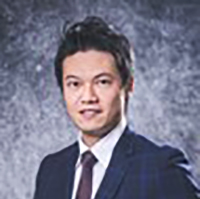
Assoc. Prof. C.W. Daniel Tsang
Hong Kong Polytechnic University, Hong Kong
Understanding pharmaceuticals adsorption on biochar via machine learning
Hong Kong Polytechnic University, Hong Kong
Understanding pharmaceuticals adsorption on biochar via machine learning
The science-informed design of ‘green’ carbonaceous materials (e.g., biochar) with high removal ability of recalcitrant organic contaminants (e.g., pharmaceuticals and personal care products (PPCPs)) is indispensable for promoting the sustainable wastewater treatment. In this study, the interpretable machine learning (ML) incorporating various Abraham descriptors of neural compounds and parameters of adsorption conditions was applied to explore the contributions of various biochar’s inherent properties (i.e., hierarchical pore size distribution, average pore diameter, and specific surface functionality) to their PPCPs adsorption capacity, which has been largely overlooked in the previous researches. The systematic data mining of the biochar composition, surface functionality, and hierarchical porous structure based on the advanced micro spectroscopic techniques was performed for a more concise model prediction (i.e., the root-mean-square error decreased by 18−24%). Our results demonstrated the relative importance of various carbon species on biochar surface was ranked in the order of C−O bond > C=O bond > non-polar carbon for predicting adsorption capacity. The average pore diameters of AC and BC that were larger than the maximum diameter of PPCPs molecules by 1.5-fold to 2.5-fold, favoured PPCPs adsorption according to the partial dependence analysis. The present work reveals new insights into the adsorption of PPCPs on biochar and provides a guidance for the engineering of biochar for wastewater treatment.
Dr. Daniel CW Tsang is an Associate Professor in the Department of Civil and Environmental Engineering at the Hong Kong Polytechnic University and Honorary Associate Professor at the University of Queensland in Australia. He was an IMETE Visiting Scholar at Ghent University in Belgium, Visiting Scholar at Stanford University in the US, Senior Lecturer and Lecturer at the University of Canterbury in New Zealand, and Post-doctoral Fellow at Imperial College London in the UK and the Hong Kong University of Science and Technology. Dan’s research strives to develop low-impact solutions to promote circular economy, sustainable waste management, and decarbonization strategies. Dan has published over 400 research papers in top 10% journals and currently serves as Associate Editor and Editorial Board Member in several prestigious journals. Dan has received the Excellence in Review Award at Green Chemistry and Environmental Science and Technology, etc. Dan is the Chair and Organizer of many international conferences including 5th Asia Pacific Biochar Conference (APBC2021).
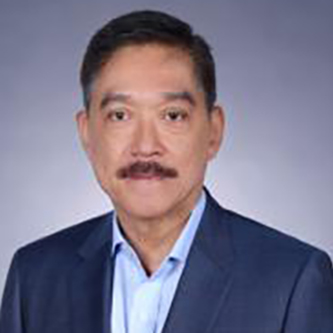
Dr. Wikrom Vajragupta
Former Director of Iron and Steel Institute of Thailand, Thailand
Construction Materials in Digital Age
Former Director of Iron and Steel Institute of Thailand, Thailand
Construction Materials in Digital Age
will be announced
will be announced

Dr. Steven H. Voldman
IEEE Fellow, USA
The Evolution of Electrostatic Discharge (ESD) from 1980 to 2020
IEEE Fellow, USA
The Evolution of Electrostatic Discharge (ESD) from 1980 to 2020
In this lecture, an overview of the evolution of electrostatic discharge (ESD) design in technology from 1980 to 2020 will be discussed. The lecture will review the evolution of design practices, structures, chip architecture, technology, testing models, test equipment, standards, computer aided design (CAD) checking and verification in the ESD protection of semiconductors. The progression of ESD practices in semiconductors, and innovations will be shown. The focus will be on the steps taken to provide improved ESD protection in today’s technologies.
Dr. Steven H. Voldman is the first IEEE Fellow in the field of electrostatic discharge (ESD) for “Contributions in ESD protection in CMOS, Silicon On Insulator and Silicon Germanium Technology.” He received his B.S. in Engineering Science from University of Buffalo (1979); a first M.S. EE (1981) from Massachusetts Institute of Technology (MIT); a second degree EE Degree (Engineer Degree) from MIT; a MS Engineering Physics (1986) and a Ph.D in electrical engineering (EE) (1991) from University of Vermont under IBM’s Resident Study Fellow program. In 2018, Dr. Voldman served as an International Visiting Scholar at Khon Kaen University in Khon Kaen, Thailand.
Dr. Voldman’s latest book is released in 2019, titled Electrostatic Discharge: From Electrical breakdown in Micro-gaps to Nanogenerators, and a second book Integrated Circuit Design for Radiation Environments. In 2018, a new book titled From Invention and Patent and a contributor to the book Nanoelectronics: Nanowires, Molecular Electronics, and Nano-devices was released. Dr. Voldman is an author of the first book series on ESD, EOS and latchup: ESD: Physics and Devices, ESD: Circuits and Devices, 2nd Edition of ESD: Circuits and Devices, ESD: Radio Frequency (RF) Technology and Circuits, Latchup, ESD: Failure Mechanisms and Models, ESD Design and Synthesis, ESD Basics: From Semiconductor Manufacturing to Product Use, and Electrical Overstress (EOS): Devices, Circuits and Systems, ESD: Analog Circuits and Design, ESD Testing: From Component to Systems, as well as a contributor to the book Silicon Germanium: Technology, Modeling and Design and In addition, the International Chinese editions of book ESD: Circuits and Devices, ESD: Radio Frequency (RF) Technology and Circuits, and ESD Design and Synthesis (2014). Soon to be released in 2021 is a new text The ESD Handbook. called
Voldman was a member of the semiconductor development of IBM, Qimonda, Intersil, Taiwan Semiconductor Manufacturing Corporation (TSMC), Samsung Electronics Corporation, and Silicon Space Technology / VORAGO Corporation. His research and development includes soft error rate (SER), cosmic rays, gate induced drain leakage mechanisms, DRAM leakage, latchup, ESD and EOS. He initiated a university lecture program which was established to bring lectures and interaction to university faculty and students internationally; the program has reached over 45 universities in the Thailand, Malaysia, Singapore, United States, Korea, Taiwan, Philippines, India, Senegal, Swaziland, Zimbabwe, Nepal, and China. Dr. Voldman has teaches short courses and tutorials on ESD, latchup, patenting, and invention. Dr. Voldman was responsible for initiating the ESD Student Chapter charter, and worked with UESTC in establishment of the first ESD Association student chapter.
He is a recipient of 264 issued US patents and has written over 150 technical papers in the area of ESD and CMOS latchup. Since 2007, he has served as an expert witness in patent litigation; and has also founded a limited liability corporation (LLC) consulting business supporting patents, patent writing and patent litigation. In his LLC, S. Voldman served as an expert witness for cases on DRAM development, semiconductor development, integrated circuits, software, and electrostatic discharge. He is presently writing patents for law firms and technology corporations. Steven Voldman provides tutorials and lectures on inventions, innovations, and patents in Malaysia, Sri Lanka and the United States.
Dr. Voldman’s latest book is released in 2019, titled Electrostatic Discharge: From Electrical breakdown in Micro-gaps to Nanogenerators, and a second book Integrated Circuit Design for Radiation Environments. In 2018, a new book titled From Invention and Patent and a contributor to the book Nanoelectronics: Nanowires, Molecular Electronics, and Nano-devices was released. Dr. Voldman is an author of the first book series on ESD, EOS and latchup: ESD: Physics and Devices, ESD: Circuits and Devices, 2nd Edition of ESD: Circuits and Devices, ESD: Radio Frequency (RF) Technology and Circuits, Latchup, ESD: Failure Mechanisms and Models, ESD Design and Synthesis, ESD Basics: From Semiconductor Manufacturing to Product Use, and Electrical Overstress (EOS): Devices, Circuits and Systems, ESD: Analog Circuits and Design, ESD Testing: From Component to Systems, as well as a contributor to the book Silicon Germanium: Technology, Modeling and Design and In addition, the International Chinese editions of book ESD: Circuits and Devices, ESD: Radio Frequency (RF) Technology and Circuits, and ESD Design and Synthesis (2014). Soon to be released in 2021 is a new text The ESD Handbook. called
Voldman was a member of the semiconductor development of IBM, Qimonda, Intersil, Taiwan Semiconductor Manufacturing Corporation (TSMC), Samsung Electronics Corporation, and Silicon Space Technology / VORAGO Corporation. His research and development includes soft error rate (SER), cosmic rays, gate induced drain leakage mechanisms, DRAM leakage, latchup, ESD and EOS. He initiated a university lecture program which was established to bring lectures and interaction to university faculty and students internationally; the program has reached over 45 universities in the Thailand, Malaysia, Singapore, United States, Korea, Taiwan, Philippines, India, Senegal, Swaziland, Zimbabwe, Nepal, and China. Dr. Voldman has teaches short courses and tutorials on ESD, latchup, patenting, and invention. Dr. Voldman was responsible for initiating the ESD Student Chapter charter, and worked with UESTC in establishment of the first ESD Association student chapter.
He is a recipient of 264 issued US patents and has written over 150 technical papers in the area of ESD and CMOS latchup. Since 2007, he has served as an expert witness in patent litigation; and has also founded a limited liability corporation (LLC) consulting business supporting patents, patent writing and patent litigation. In his LLC, S. Voldman served as an expert witness for cases on DRAM development, semiconductor development, integrated circuits, software, and electrostatic discharge. He is presently writing patents for law firms and technology corporations. Steven Voldman provides tutorials and lectures on inventions, innovations, and patents in Malaysia, Sri Lanka and the United States.
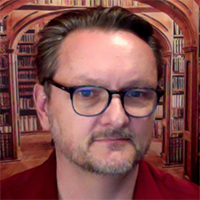
Prof. Jean-Christophe Lapayre
University of Franche-Comté, France
Computer Supported Collaborative Work, an Essential Computer Science Domain at the Heart of eHealth and Telemedicine
University of Franche-Comté, France
Computer Supported Collaborative Work, an Essential Computer Science Domain at the Heart of eHealth and Telemedicine
Since the beginning of the 21st century, computer performance (CPU, network, etc.) has enabled distant people to discuss, chat and exchange information (eg MSN, skype, etc.). But the field of medicine is highly constrained and must be completely reliable. Thus, telemedicine platforms require security and safety: patients’ data must be secured to protect privacy, but they must also be reliable (integrity of data) to not distort a diagnosis. Thus, Computer Supported Collaborative Work (CSCW) must provide the “distributed systems” and “distributed protocols” needed to obtain these essential guarantees.
CSCW really emerged in the early 2000s and has been adapted to be applied on telemedicine applications all around the world since 2010 (in France for example act HPST 2010 decree that concern these practices). Some practitioners or patients, unfamiliar with computers, were reluctant to accept having a computer between them and this virtual human contact (absence of human presence, of touch, of contact). Since last year, the COVID pandemic has affected the entire planet, the world changed irreparably, teleworking (to which our techniques can also be applied) and telemedicine have become common and requested practices.
My career
- Sep. 2002: Assistant Professor: Habilitation to Supervise Research Work (HDR in France),
- Sep. 2003: Professor.
- Jan. 2003 – Jan. 2007: Head of the Computer Science Teaching Department of Franche-Comte University.
- Jan. 2008 – Jan. 2010: Director of the Franche-Comte Computer Science Lab. During this period, I obtained the integration of my Lab., as the 7th Research Dept, in FEMTO-ST CNRS Mixte Unity. Thereby, LIFC became the new DISC (Dept of Informatics for Complex Systems) of CNRS FEMTO-ST Institut in January 2012.
- Since 2012, at ISIFC Biomedical Higher Institute of Ingineers of Franche-Comte
- Head for the 3rd Year and the 3rd Year e-Health Option
- Responsible for R&D Training Courses
- Senior IEEE member since 2012.
- General Field: Distributed Systems, Distributed Algorithms.
- Current research interest: eHealth&Telemedicine, TeleApplications, Computer Supported Collaborative Work, Distributed Computing, Multimedia, Adaptation, Flexibility, Ontology…
- 20 PhD were defended (8 funded by French government, 2 funded by European Union, 1 funded by Thai government, 5 with Tunisia, 1 with Morocco, 3 industrial CIFRE).
- Spin-off on Telediagnosis of my research team. Now, Covalia is the telemedicine part of Maincare Corporate Company.

Assoc. Prof. Julien Henriet
University of Franche-Comté, France
Contributions to the Conception of Distributed Platforms Based on Deep Learning and Case-Based Reasoning
University of Franche-Comté, France
Contributions to the Conception of Distributed Platforms Based on Deep Learning and Case-Based Reasoning
Deep Learning is a paradigm which proposes remarkable tools (Arti_cial Neural Networks, Convolutional Neural Networks). These tools allow automatic creation of rules for classification which are not obvious a priori. Unfortunately, they must be trained over large sets of data before being able to interpolate properly. Actually, they can only give back rules from the experiments they have experienced themselves. On the contrary, systems based on Case-Based Reasoning (CBR) can integrate and apply other types of knowledge: rules, theoretical and practical knowledge, vocabulary. However, all these types of knowledge must be explicit and thus must be understandable. Thus, creating systems which associate tools from these two complementary paradigms is beneficial, the strengths of one overcoming the weaknesses of the other. This talk will present scientific contributions with different manners to associate tools from Deep Learning and CBR paradigms in order to give solutions to experts of Health, imagery, education and monitoring. Considering the emergence of the Internet of objects and captors which are now capable of analysing perceived data themselves, the integration of tools of these two paradigms inside these captors appears to be an advantage and offers interesting perspectives.
Diplomas:
- 1996 Engineer in Computer Science, Engineering School of ENSIIE, Evry, France.
- 2005 Doctor in Computer Science, University of Franche-Comté, Besançon, France.
- 2020 Research Director Habilitation, University of Franche-Comté, Besançon, France.
- 1996–1997 Engineer, Computer Science, Cap Gémini, Paris, France.
- 1997–1998 Engineer, Computer Science, SFR, Paris, France.
- 1998–2003 Engineer, Computer Science, Ordosoftware, Besançon, France.
- 2003–2006 Engineer, Computer Science, University of Franche-Comté, Besançon, France.
- Since 2006 Associate Professor, University of Franche-Comté, Besançon, France.
- FEMTO-ST Institute, UMR 6174 CNRS, Computer Science Department (DISC).
- Algorithms and programming,
- Database management,
- Introduction to Artificial Intelligence (Case-Based Reasoning and Deep Learning).
- General Field: Distributed Artificial Intelligence.
- Current research interests: Adaptation in Case-Based Reasoning, Deep Learning, Medical Imagery,
- Education systems.
- EPFL (Lausanne and Neuchâtel), Switzerland.
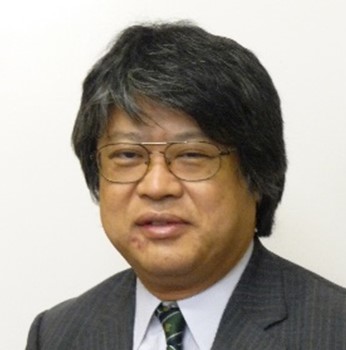
Prof. Atsushi FUKUDA
Nihon University, Japan
What will digital transformation (DX) bring to Japanese logistics?
Nihon University, Japan
What will digital transformation (DX) bring to Japanese logistics?
Logistic Industry in Japan now faces many problems. Due to the rise of online shopping, which is one of the factors expanding the market size of the logistics industry, the number of large B to B deliveries to small B to C and personal deliveries has increased significantly. In addition to the increase in small-lot deliveries, the frequency is also increasing, which increases the burden on drivers compared to before. On the other hand, due to the declining birthrate and aging population, the working-age population is declining regardless of industry. It is estimated that there will be a shortage of about 208,000 commercial truck drivers in 2025 and 278,000 in 2028. Due to above problems, the burden on the driver is increasing year by year. As with drivers, labor shortages are becoming constant for employees in charge of driver operation management and clerical work at transportation companies. As a result, the burden on employees is increasing throughout the logistics industry, including drivers. Especially, in response to the new coronavirus infection, EC market is expanded and amount of home delivery service is increased. It is expected that this tendency will be continued after this.
Thus, Digital Transformation will be key technology for Japanese Industry, especially logistic industry. According to the “Guidelines for Promoting Digital Transformation (DX)” compiled by MITI in 2018, DX is defined “Companies respond to drastic changes in the business environment, utilize data and digital technologies to understand the needs of customers and society, and transform products, services, and business models. At the same time, change the business itself, organization, process, corporate culture and culture, and establish a competitive advantage.” To put it simply, DX is the solution to social and corporate issues using new digital technologies such as AI and IoT.
Towards DX, three stages are expected;(1)Digitization; Digitize analog information for local improvement,(2)Digitalization; Spread digitalization throughout the process and create new value, and (3) Digital Transformation; Conduct activities that change the business model and corporate culture, and have a social impact. The purpose of DX is not just to use information to save labor, but ultimately to optimize the business itself. We can already see many digital transformation ideas such as an efficient warehouse system, digitization of product management, utilization of automatic truck driving and drone delivery, etc. DX will change business model in logistic industry dramatically. New mobility service by MaaS is also another example of DX in transport sector. With autonomous vehicle which connected with cloud, many retail service comes to your home soon.
The ultimate goal of DX is not just digitization, but to bring continuous innovation to organizations and systems. The promotion of DX will not only improve the efficiency of logistic systems and transportation systems, but will also bring about major changes in the lifestyles of consumers. In particular, countermeasures against COVID-19 infection may accelerate this change. The promotion of DX is likely to play an important role in the realization of Smart Cities in the future.
Thus, Digital Transformation will be key technology for Japanese Industry, especially logistic industry. According to the “Guidelines for Promoting Digital Transformation (DX)” compiled by MITI in 2018, DX is defined “Companies respond to drastic changes in the business environment, utilize data and digital technologies to understand the needs of customers and society, and transform products, services, and business models. At the same time, change the business itself, organization, process, corporate culture and culture, and establish a competitive advantage.” To put it simply, DX is the solution to social and corporate issues using new digital technologies such as AI and IoT.
Towards DX, three stages are expected;(1)Digitization; Digitize analog information for local improvement,(2)Digitalization; Spread digitalization throughout the process and create new value, and (3) Digital Transformation; Conduct activities that change the business model and corporate culture, and have a social impact. The purpose of DX is not just to use information to save labor, but ultimately to optimize the business itself. We can already see many digital transformation ideas such as an efficient warehouse system, digitization of product management, utilization of automatic truck driving and drone delivery, etc. DX will change business model in logistic industry dramatically. New mobility service by MaaS is also another example of DX in transport sector. With autonomous vehicle which connected with cloud, many retail service comes to your home soon.
The ultimate goal of DX is not just digitization, but to bring continuous innovation to organizations and systems. The promotion of DX will not only improve the efficiency of logistic systems and transportation systems, but will also bring about major changes in the lifestyles of consumers. In particular, countermeasures against COVID-19 infection may accelerate this change. The promotion of DX is likely to play an important role in the realization of Smart Cities in the future.
Prof. Atsushi FUKUDA has been involved in education and research in the field of transportation planning for 32 years since being employed as an assistant at the Nihon University Faculty of Science and Engineering in 1988. He worked as an assistant professor at the Asian Institute of Technology in Thailand as a JICA long-term expert from 1989 to 1991, and has been involved in many government development assistance projects targeting developing countries, especially Southeast Asia since then. He has led various feasibility studies on the Clean Development Mechanism, Nationally Appropriate Mitigation Actions (NAMAs) and Joint Crediting Mechanism (JCM) studies in the transport sector in the ASEAN region, especially for MRV method development for urban railway project. Recently, he served as an advisor in the JICA Bangkok-Chiang Mai High-Speed Railway Development Project Preparatory Survey and the information collection and confirmation survey related to the Bangkok Metropolitan Urban Railway Master Plan Revision (M-MAP2). In 2008, the activities so far were recognized, and the Japan Society of Civil Engineers was awarded the International Activity Promotion Award. In the first year of the Heisei Year, he received the Best Paper Award from the Asian Transport Association for his research on workability around the railway station in Bangkok.
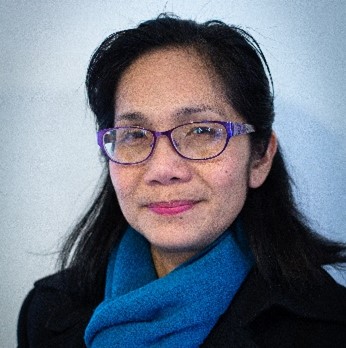
Dr. Kesorn Pechrach Weaver
Founder and director: Ronsek Innovation and Nertune, UK
Development Alternative Self Supply Energy Smart Grid for Small Scale Orchard and Aeroponic from TRL 4 to TRL7
Founder and director: Ronsek Innovation and Nertune, UK
Development Alternative Self Supply Energy Smart Grid for Small Scale Orchard and Aeroponic from TRL 4 to TRL7
will be announced
will be announced
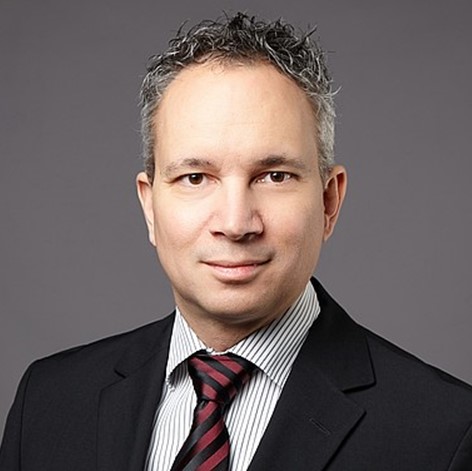
Prof. Jozo Acksteiner
Fulda University of Applied Sciences, Germany
Rapid Decision Making with Geographic Analytics
Fulda University of Applied Sciences, Germany
Rapid Decision Making with Geographic Analytics
will be announced
will be announced
